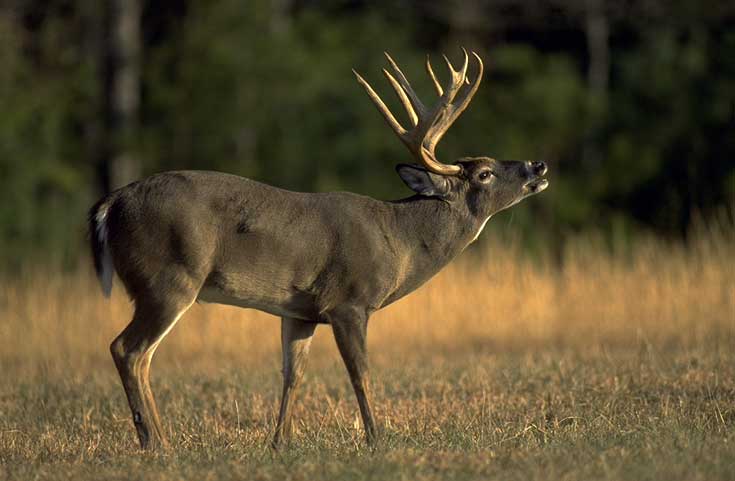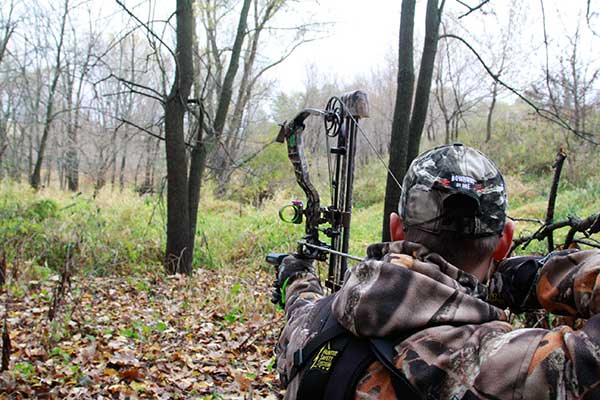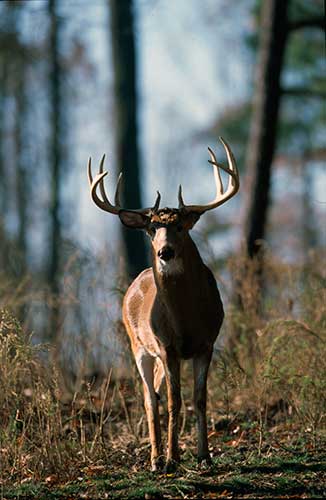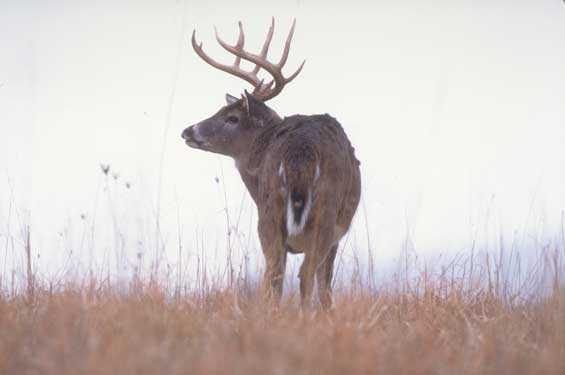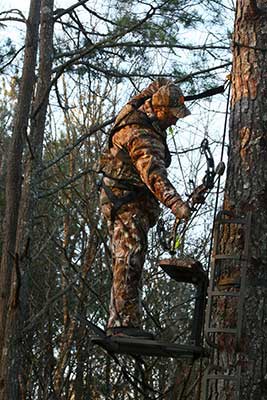LAST UPDATED: May 1st, 2015
Modern bowhunting equipment has blurred the ethical lines of shot placement, but there are still several shots you should avoid altogether.
I’m always amazed by the juxtaposition of opinions existing when comparing early bowhunting icons such as Fred Bear, Howard Hill and Ben Pearson and bowhunters operating in the new millennium. Out of a single mouth can fly sentiments originating from opposite ends of the spectrum. On one hand you have Fred Bear shooting a world’s record Stone sheep facing him at something like 60 yards, lobbing his arrow over an abutment of rock (successfully), Howard Hill’s “If you want to kill something you have to put some wood in the air” and Ben Pearson’s 80-plus-yard shots at animals no less formidable than polar bear.
At the other extreme you have magazine readers whose hair catches fire any time I mention shots at big game taken from more than 40 yards and bowhunting education instructors telling students the only shot allowed is a perfectly broadside or slightly-quartering one at less than 25 yards (implying, also, every bowhunter approaches archery with identical experience levels and dedication to quality practice). We seem to accept potentially-disastrous shots taken by early archery icons as part of their mystique. The same people who would have you believe early archery pioneers were somehow superhuman roundly criticize anyone who works very, very hard to extend their maximum effective range well beyond the capabilities of the one judging them (also with much, much better equipment than those early icons had available).
While modern archery equipment has certainly allowed us to extend our effective range and take shots once previously frowned upon, the 20 yard broadside shot is still the bowhunter’s best option if presented.
Broadside inside 25 yards is certainly the ideal (at least for me — as some modern bowhunters seem to measure success by how long they are able to take game). Still, modern compound bows, precise carbon arrows and more rugged broadheads designed to provide accuracy at the fastest speeds have opened more doors than available even during the days when I first started bowhunting with recurve bows and aluminum arrows back in the late 1970s. My earliest bows were hard pressed to surpass 50 foot pounds of Kinetic energy. My average setup today easily pushes 80 foot pounds KE. Shoulder blades, for instance, no longer concern me; having recently experienced pass-through penetration after breaching scapulas on animals no less formidable than a 700-pound bull elk and 350-pound black bear (shooting 70-plus pounds pulled to 30 inches, propelling 10 gpi carbons and all-steel broadheads). Not something I’d recommend with “average” equipment, which mine certainly isn’t, though it certainly isn’t gear assembled with something like, say, African Cape buffalo in mind…
Be that as it may, despite today’s exceptional equipment, there are still shots that should be avoided like a plague. These are the shots under discussion today.
Poke-And-Hope Shots
Maximum effective range is a term used a lot in bowhunting, but perhaps one not understood completely. Maximum effective range, by my definition, is the ability to put five of five arrows in a paper plate at a given range – while wearing hunting duds, after sitting in a tree-stand three hours or hustling up a steep mountain hillside, and while under the influence of the adrenaline produced by being close to game. So, take your best-day, back-yard maximum effective range and subtract about 20 percent for real-world capabilities. On my best day I can put those five shafts into a paper plate out to, say, 80 yards. Can I do this on a bugling elk or feeding whitetail at the same range? Maybe, maybe not. The point is, would I try? The answer is always no. But if I’ve somehow managed to gut-shoot an animal at 30 yards and he stops at 80 (or 90 or 100), I’ll take such a shot and likely poke another hole in him somewhere.
Each bow hunter must decide what their maximum effective range is. Taking shots beyond that measure can be risky at best.
Only you can honestly answer the question of real maximum effective range at the moment of a shot at big game. My general litmus test is a matter of confidence. Bowhunting is not to be confused with gambling. When presented by a shot at game let your conscience be your guide. If there are any nagging doubts you should probably pass the shot. If it feels good and you can honestly tell yourself before releasing an arrow, “I can make this shot,” then take it. Your quarry deserves nothing less.
Running Shots
I own a dog-eared copy of Fred Bear’s Field Notes, a great book by a great man. I’ve read it several dozen times but each time find myself struck by how often Bear was willing to take questionable shots – and how often those shots actually turned out well for him. The most glaring were running shots at various ranges. Back in the day when we all shot bows instinctively we spent a good deal of time practicing moving shots by rolling a motorcycle tire, its center filled with cardboard, down an incline and taking turns shooting at its center. We got pretty good at it. A running rabbit at any reasonable range was in no way safe from our arrows. I still regularly bowhunt with traditional gear and have made some fantastic shots at running game (mostly Texas wild boars and small game), but still contend 98 percent of modern bowhunters have no business taking shots at animals passing faster than an amble.
The modern compound is deadly effective on static game because of all the checkpoints provided by technology crutches. On moving game this advantage is completely lost. There’s too much information to process in too short a time. This doesn’t imply the average longbow or recurve man should make a habit of running shots either, but it’s a recipe for disaster with compounds. If you’ve spurred the flight, accept your defeat like a man. If you’re dealing with an unsuspecting animal passing in a hurry (scent-trailing a doe, say), producing a sharp mouth bleat can coax them to pause for a standing shot.
Facing Shots
Here’s the deal with facing shots: Your aiming point is a baseball- to softball-sized target, dead center windage-wise, above the sternum and below the neck base. Too high and you hit neck meat (unless you get very lucky and sever one of the carotid arteries), too low and you’re out of vitals, left or right and you hit nothing but meat/shoulders. The only time I might try such a shot would be on an elk responding to a call inside 25 yards (granted I’m already at full draw when he arrives on the scene and he’s not alerted). That elk would need to be 90 degrees head on and standing on the same level as me. Some level of calm is indicated as well…
Otherwise, too much can go wrong here. The potential for a string jump is huge. One degree off one way or the other and you hit bone and stop your arrow dead – at best – inflict a non-fatal flesh wound, or worse, a single-lung hit with little hope of recovery.
The “Texas Heart Shot”
The Texas heart shot, or animals facing or walking dead away, is another one of those shots that can be deadly with lots of luck, but there’s just too much that can go wrong here. The pelvis is the largest bone structure in any animal. You can break that pelvis with a high-powered rifle and put an animal down on the spot, but with a bow that just isn’t going to happen on anything bigger than a 40-pound javelina. There’s only two long-shot happy endings involved (straight up the anus with enough energy to push your arrow through guts and into forward-situated vitals (like I said, long shot), or accidently slice through one of the femoral arteries feeding each ham. I’ve seen each work, but I’m not a particularly lucky fellow and never count on good fortune when bowhunting. This is an obvious pass.
Directly Beneath Your Stand
There’s a thing called too much of a good thing. When occupying tree-stands (or stalking in cliffy terrain) this means animals that are too close. A whitetail deer directly beneath your stand (or muley at the base of a cliff directly below you) may seem tempting but straight-down shots are always low-odds propositions. There are a couple glaring problems; when looking straight down on an animal its vitals are protected by heavy bone (vertebra and converging ribs) and the likelihood of a single-lung hit increase dramatically. You might get lucky and sever an animal’s thumb-thick spinal cord, dropping him on the spot, sever one of two major arteries running along the bottom of each side of the spinal column, or bypass deflecting ribs and reach the heart and its feeding arteries. You might also win a Power Ball Lottery.
But there is a silver lining to such encounters. Bid your time, allow the animal to wonder away from the base of the tree or cliff 10 yards and you’ll soon be presented with an ideal shot inside 20 yards and allowing one well-placed arrow to puncture both lungs and put the animal down within sight.

 By
By 